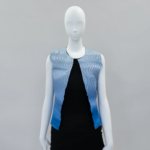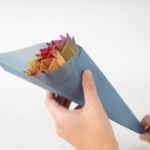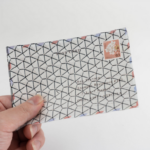A group from The University of Tokyo’s Department of Electrical Engineering and Information Systems recently published an article about their method to 4D print high resolution self-folding origami structures. Their method combines 4D printing, origami, and chemistry to create objects that have resolutions 1200 times higher than those from fused deposition modeling (FDM) 4D prints. This process has the potential to be used in numerous applications, and may even be a way to ship your Zara t-shirt in the future.
4D printing has been around for 10 years now, and is the process of 3D printing a material that can move when a stimulus like heat, light, or electricity is applied post print. The technology is actively being explored for use in construction, military, and space exploration, and could be a game changer for 3D printing. However, like all technologies, 4D printing also has its limitations, with one prominent limitation being unaided self-folding.
The group from the University of Tokyo, led by Assistant Professor Koya Narumi, sought to tackle this problem head-on and explore ways to leverage tessellations in order to speed up the self -folding process. The group’s idea was to print two-dimensional patterns atop a heat shrinkable sheet using commercially available UV inkjet inks and printers. After printing, the heat shrinking film was then heated via water, and the sheet would spontaneously morph into the desired shape. Based on the tessellations patterned, the stresses and strains could be predicted via simulations and designed in a way to contour into the desired form.

Image of the self-folding process with the 4D printed bouquet. (Image courtesy of ACM Transactions on Graphics)
The group says their biggest challenge was finding the right hardware and inks to use for this process. Through trial and error, they ultimately landed on Mimaki UJF-6042 MKII as the UV printer, Mimaki LUS150 (CMYK+White), LH-100 (clear), and PR-200 (primer) as the UV curable inks, and Hakko Shrink Film 841-02 and Vilene Iron Shrink Sheet OR-30N as the heat shrink films. With these selections, the group improved the resolution 1200 times that of a standard FDM 4D print and enacted the shape change process quicker and with less human involvement than previous research had shown.
Narumi’s team also showcased their technology’s potential end use applications with 5 different demos: a hat, a jacket, a bouquet of flowers, a ship in a bottle, and an envelope. In the future, the team says, they would love to explore other functional materials like conductive or magnetic inks, and attempt to achieve smoother surfaces using this technique.
- 4D printed hat. (Image courtesy of ACM Transactions on Graphics)
- 4D printed coat. (Image courtesy of ACM Transactions on Graphics)
- 4D printed bouquet. (Image courtesy of ACM Transactions on Graphics)
- 4D printed envelope. (Image courtesy of ACM Transactions on Graphics)
- 4D printed ship in the bottle. (Image courtesy of ACM Transactions on Graphics)
Overall, this is a great addition to the 4D printing community. Narumi’s team was able to find a solution to a issue that has been prevalent in the field and could be used in many industries such as fashion, space exploration, and medical. I can definitely see this joining the other efforts in 4D printing, and with how much interest 4D printing has seen over the past decade, we are sure the research will continue to flourish in this area.
Subscribe to Our Email Newsletter
Stay up-to-date on all the latest news from the 3D printing industry and receive information and offers from third party vendors.
Print Services
Upload your 3D Models and get them printed quickly and efficiently.
You May Also Like
Consolidation in AM: How 2025 Is Shaping the Industry’s New Normal
The first half of 2025 has been marked by a clear shift in the additive manufacturing (AM) industry. Companies are no longer just focused on developing new tech by themselves....
Etsy Design Rule Change Reduces Selection of 3D Printed Goods
Online marketplace Etsy has implemented a rule change requiring all 3D printed goods on the site to be original designs. The update to the site’s Creativity Standards states, ¨Items produced using...
U.S. Congress Calls Out 3D Printing in Proposal for Commercial Reserve Manufacturing Network
Last week, the U.S. House of Representatives’ Appropriations Committee moved the FY 2026 defense bill forward to the House floor. Included in the legislation is a $131 million proposal for...
Transforming From Tourist to Native: Duro CEO Michael Corr Explains Why the Company Rebuilt its PLM Software on AI
In these early innings of the AI boom, many market analysts have expressed concern that AI spend has gotten too far ahead of the technology’s proven ability to deliver significant...





































